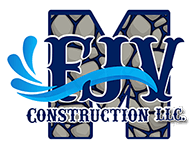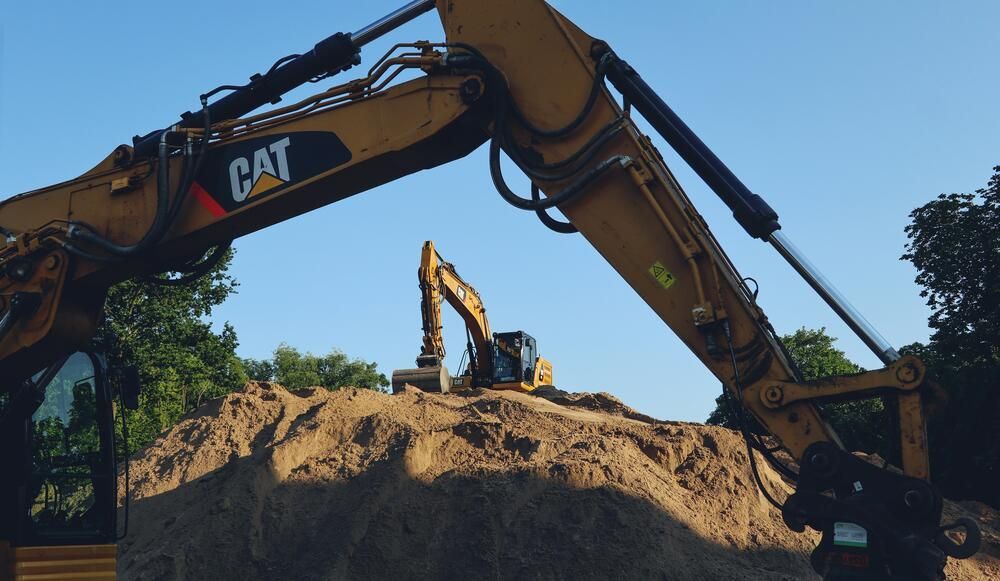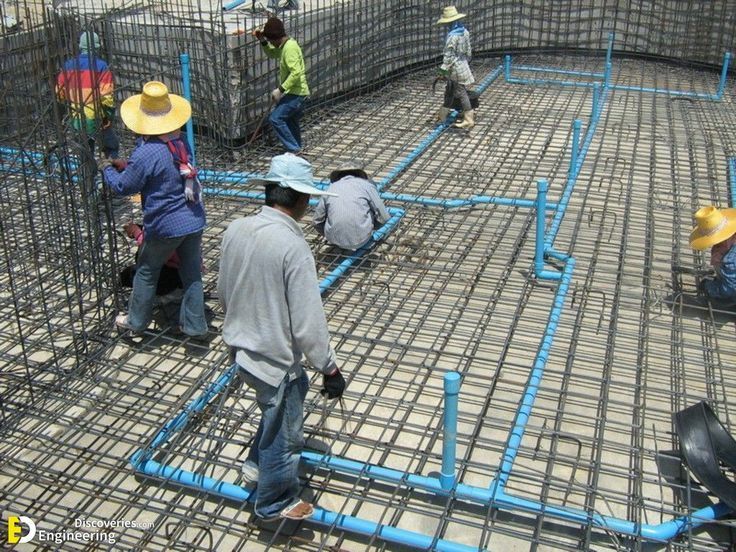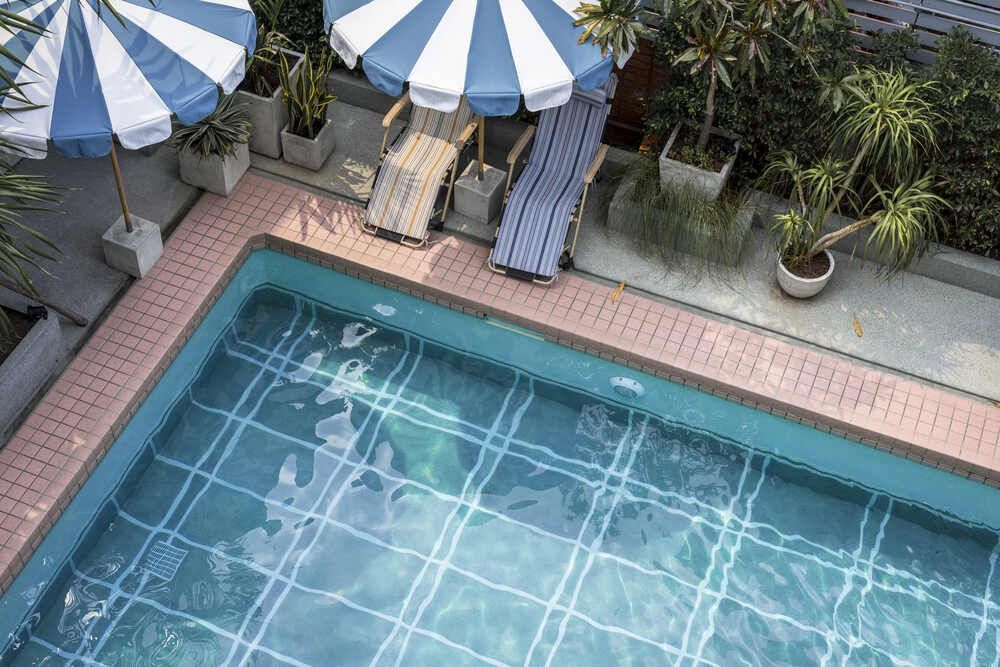6 Pool Installation Hacks for Sloped or Uneven Landscapes

Frequently Asked Questions (FAQs)
What is the best time of year for pool installation on uneven terrain?
The ideal time for pool installation on uneven terrain is during the dry season, typically in late spring or early summer. Dry conditions help stabilize the soil and reduce complications caused by excess moisture or erosion. Installing a pool during this period also allows sufficient time for landscaping and any necessary adjustments before colder weather arrives.
Can landscaping features like decks or patios be added after pool installation?
Yes, landscaping features such as decks or patios can be added after pool installation to enhance the overall design and functionality. Adding these elements later allows homeowners to assess the pool's layout and surrounding area before making final decisions. Partnering with pool installation experts ensures that any post-installation additions are structurally sound and align with the pool’s foundation.
How long does it take to install a pool on a sloped property?
The timeline for pool installation on a sloped property depends on factors like the landscape's complexity, the pool design, and weather conditions. On average, it can take several weeks to a few months, with additional time needed for preparatory work like grading and retaining wall construction. Custom designs or challenging terrains may require more time due to their intricate demands.
What additional costs should be expected for installing a pool on uneven terrain?
Installing a pool on uneven terrain may involve additional costs for grading, retaining walls, and drainage systems. Custom designs and reinforced materials might also increase the overall budget. The extent of these costs depends on the slope’s severity and the complexity of the installation. A professional assessment and detailed quote from the installers can help property owners plan their budget accurately.
How can landscaping complement a pool on a sloped property?
Landscaping can enhance the functionality and aesthetics of a pool on a sloped property. Features like tiered gardens, stone pathways, or decking can seamlessly integrate the pool into the natural terrain. Plants and ground cover can also prevent soil erosion and improve drainage around the pool area.
Transform Your Outdoor Space with Expert Pool Installation!
FJV Construction in Danbury, CT, specializes in pool installation services that bring luxury and functionality to any property, even on sloped or uneven landscapes. With a commitment to precision and quality, our team handles every aspect of the process, from grading and custom design to final construction. Trust FJV Construction to deliver innovative solutions tailored to the unique challenges of your landscape.
Contact us today to start your pool installation project in Danbury, CT!
Uneven terrains present unique challenges to pool installation, such as drainage issues, soil instability, and increased excavation needs. Fortunately, innovative approaches like custom designs, retaining walls, and advanced drainage solutions can transform these obstacles into advantages. With the right strategies, pool installations become an opportunity to create a stunning, functional outdoor feature.
Here are six practical hacks that ensure an efficient pool installation process for sloped and uneven landscapes in Danbury, CT.
Table of Contents
1. Pool Grading and Excavation Techniques
2. Installing Retaining Walls
3. Opting for Infinity or Spillover Pool Designs
4. Customizing Pool Shapes and Sizes
5. Using Above-Ground or Semi-Inground Pools
6. Consulting Pool Installation Professionals
How to Select the Right Pool Installers for Your Project
Frequently Asked Questions (FAQs)
Transform Your Outdoor Space with Expert Pool Installation!
Key Takeaways
✔ Proper grading and excavation techniques prevent soil erosion, ensure stability, and create a level base for pool installation.
✔ Retaining walls provide structural support, prevent soil movement, and add visual appeal to sloped landscapes.
✔ Infinity and spillover pool designs utilize natural slopes, enhance scenic views, and simplify drainage management.
✔ Customizing pool shapes and sizes optimizes available space, improves stability, and enhances the pool's uniqueness.
✔ Above-ground or semi-inground pools reduce excavation needs, adapt to uneven terrain, and blend seamlessly with creative landscaping.
✔ Consulting professionals ensures expert analysis, access to specialized tools, and compliance with local regulations.
✔ High-quality materials, thorough planning, and advanced techniques are crucial to overcoming challenges on uneven landscapes.
1. Pool Grading and Excavation Techniques
Preparing sloped or uneven landscapes for pool installation begins with proper grading and excavation. These steps ensure the foundation is stable, which helps prevent costly issues like soil erosion or structural damage. When done correctly, grading and excavation create a level and secure base for the pool to withstand environmental challenges.
Why Proper Grading and Excavation Are Essential
Prevents Water Accumulation
Without proper grading, water runoff can collect around the pool, which can lead to potential flooding or damage to the structure. Creating a slight slope away from the pool ensures rainwater drains effectively and keeps the pool and surrounding areas dry.
Ensures Foundation Stability
A well-excavated base prevents the pool from shifting or settling over time due to uneven support. Stabilizing the soil with compaction during excavation provides a solid and durable foundation for the pool installation.
Reduces Long-Term Maintenance Issues
Poor grading can result in uneven pressure on the pool walls and cause cracks or structural failure. Proper excavation eliminates weak spots, ensuring the pool remains stable and reducing the need for expensive repairs down the line.
How to Execute Proper Grading and Excavation
Use Advanced Laser Grading Tools
Laser grading tools allow precise measurement of the landscape to achieve the correct slope and level. This ensures the pool installation adheres to exact specifications and reduces the risk of uneven support.
Stabilize Soil with Retaining Methods
Incorporating retaining walls or compacted gravel into the excavation process helps hold the soil in place. This prevents erosion and ensures the pool’s base remains firm over time.
Compact the Excavated Area Thoroughly
Using a plate compactor or heavy machinery to compact the soil ensures the area is firm and ready for pool installation. This reduces the risk of settling or instability after the pool is installed.
2. Installing Retaining Walls
Building retaining walls is a practical solution for managing the challenges of sloped or uneven landscapes during pool installation. These walls provide structural support by holding back soil, which creates a stable base for the pool.
Why Retaining Walls Are Important
Prevents Soil Erosion
Retaining walls hold back loose soil on steep slopes, which keeps the pool stable. Without them, erosion can compromise the foundation and cause damage over time.
Adds Structural Stability
Retaining walls create a firm boundary that supports both the pool and surrounding landscaping. This extra layer of reinforcement prevents shifting or settling on uneven terrains.
Improves Aesthetic Appeal
Well-designed retaining walls can double as decorative elements, where pool owners can incorporate materials like stone or brick to complement the landscape. They also provide an elegant way to transition between different elevations.
How to Build Effective Retaining Walls
Choose Durable Materials
Use materials such as concrete blocks, natural stone, or treated wood to ensure the walls withstand the pressure of soil and water over time. Using high-quality materials reduces the risk of cracks or collapses.
Incorporate Drainage Systems
Add drainage pipes or gravel layers behind the wall to prevent water buildup, which can weaken the structure. Effective drainage maintains the wall's stability during heavy rains.
Follow Local Building Codes
Ensure retaining walls meet local regulations regarding height and structural integrity. Consulting guidelines helps avoid legal complications and ensures a safe pool installation.
3. Opting for Infinity or Spillover Pool Designs
Infinity or spillover pool designs are ideal for sloped landscapes, as they can turn natural elevation into a design feature. These pools work with the land's contours, creating a luxurious and functional addition. Their unique edge designs also eliminate the need for excessive excavation, making them a practical choice for pool installation on uneven terrain.
Why Infinity Pools Are Perfect for Sloped Landscapes
Utilizes the Existing Slope
Instead of leveling the land, infinity pools take advantage of natural slopes to create a seamless visual effect. This reduces the amount of groundwork needed for pool installation.
Enhances Scenic Views
The vanishing-edge effect integrates the pool with the surrounding landscape to offer stunning views. This design is particularly effective on properties overlooking water or hills.
Simplifies Drainage Management
Spillover edges naturally direct excess water into catch basins, which reduces drainage complications. This helps maintain the pool’s water levels and protects surrounding areas from water spillage.
How to Successfully Install an Infinity Pool
Use Reinforced Edge Construction
Reinforce the infinity edge with durable materials like stainless steel or concrete to handle water pressure effectively. This ensures the pool's structural integrity on uneven terrain.
Incorporate Overflow Systems
Design an efficient overflow system to manage water that spills over the edge by directing it to a catchment area for recirculation. Proper systems prevent water wastage and pooling issues.
Consult an Experienced Designer
Work with professionals who specialize in infinity pools to ensure the design aligns with the slope. Their expertise, equipment, and skills help minimize risks and maximize the pool's visual impact.
4. Customizing Pool Shapes and Sizes
Customizing the pool's shape and size allows it to adapt to uneven landscapes. A standard rectangular pool might not fit the available space or slope, but tailored designs can ensure that the pool installation suits the property’s unique contours. It’s recommended for pool owners to check common pool standard sizes to help make an informed decision.
Why Customized Pools Are Effective
Maximizes Available Space
Custom shapes can fit awkward spaces or steep inclines, making the most of the landscape. This approach reduces the need for extensive excavation.
Improves Stability
Tailored designs adapt to the terrain, which prevents excessive strain on the pool structure. Customization also minimizes disruptions to the natural slope, ensuring that the installation remains stable at all times.
Creates Unique Aesthetics
Unconventional pool shapes add a distinctive touch to outdoor spaces. This can be aligned with personal preferences and landscape features to elevate visual appeal.
How to Create a Customized Pool
Analyze the Site Thoroughly
Hire experts to conduct a detailed assessment of the terrain to determine the best pool shape and size. Factors like slope grade and soil type should guide the design process.
Choose Flexible Materials
Use materials like fiberglass or vinyl that can accommodate irregular shapes. These options simplify customization and installation on uneven surfaces.
Incorporate Functional Features
Add built-in steps or benches to maximize usability and enhance the design. These features can be tailored to fit the unique layout of the pool.
5. Using Above-Ground or Semi-Inground Pools
Above-ground or semi-inground pools are excellent options for sloped or uneven terrains, as they require less groundwork and excavation. These designs work with the land rather than against it, making them cost-effective and versatile.
Why Above-Ground and Semi-Inground Pools Are Ideal
Minimizes Excavation Needs
Unlike in-ground pools, these options adapt to the slope without significant leveling. This reduces overall installation time and total costs.
Improves Durability
Semi-inground pools provide additional support against shifting soil, especially on uneven landscapes. They balance the benefits of both above-ground and in-ground designs, such as reduced soil pressure, enhanced structural integrity, and improved resistance to environmental forces.
Blends With the Environment
When paired with landscaping elements like decks or retaining walls, these pools can look as sophisticated as traditional in-ground pools.
How to Install Above-Ground or Semi-Inground Pools
Prepare a Level Base
Ask installers to compact the soil or add a gravel base to create a stable foundation. This ensures the pool remains level and reduces strain on the structure.
Add Surrounding Decks
Build a deck around the pool to enhance access to the pool area. Decking also helps integrate the pool into the surrounding landscape, to give it a more impactful visual appearance.
6. Consulting Pool Installation Professionals
Tackling sloped or uneven landscapes requires expertise that only professionals can provide. Pool installation specialists have the knowledge and tools to design and implement solutions tailored to challenging terrains. Consulting experts ensures the project is completed efficiently, safely, and with long-term durability in mind.
Why Consulting Professionals Is Essential
Offers Expert Terrain Analysis
Professionals assess the landscape to determine the best approach, from grading to drainage solutions. Their expertise minimizes risks and ensures the pool installation suits the site.
Provides Access to Advanced Tools
Specialists use equipment like laser levels, compactors, and reinforced materials to handle uneven terrains effectively.
Ensures Compliance With Local Regulations
Pool installation involves permits and codes that vary by region. Professionals provide assistance with these requirements to ensure that the project meets all legal standards.
How Professionals Simplify Installation
Create a Comprehensive Plan
Experts design a detailed plan that addresses slope challenges, drainage, and structural stability. This plan guides the installation process and avoids costly mistakes.
Use Specialized Techniques
Professionals apply methods like reinforced retaining walls and customized pool designs to accommodate the landscape.
Handle Unexpected Challenges
With experience managing complex terrains, professionals can address unforeseen issues, such as unstable soil or drainage complications, ensuring the project stays on track.
How to Select the Right Pool Installers for Your Project
The residential swimming pool market is expectedto reach USD 9.73 billion by 2027, highlighting the increasing popularity of backyard pools. As such, choosing the right pool installers in Danbury, CT, is essential to ensure a successful pool installation, especially on sloped or uneven landscapes. Here are six key tips to follow when selecting pool installers for a project:
1. Check Experience With Challenging Landscapes
Not all pool installers specialize in working with uneven or sloped terrains. It’s important to look for companies with proven expertise in managing complex landscapes, as they are more likely to provide tailored solutions. Reviewing their portfolio or requesting examples of similar projects ensures they have the skills needed for a smooth installation.
2. Ensure Comprehensive Services
The best pool installers provide a full range of services, from initial site assessments to post-installation maintenance. Comprehensive offerings demonstrate their commitment to quality and allow for consistent oversight throughout the project. This also reduces the need for multiple contractors, which ensures streamlined communication and fewer project delays.
3. Verify Licensing and Certifications
Pool installation requires adherence to local codes and regulations, making it critical to hire installers who are properly licensed and certified. Professionals with the right credentials are more likely to meet safety standards and comply with legal requirements. Verifying certifications also indicates their commitment to maintaining industry best practices.
4. Read Reviews and Testimonials
Customer feedback offers valuable insight into a pool installer’s reliability and quality of work. Positive reviews and detailed testimonials can confirm their expertise and professionalism, while recurring negative comments serve as red flags. Additionally, asking for references provides an opportunity to speak directly with past clients about their experiences.
5. Ask About Custom Design Capabilities
For sloped or uneven landscapes, a one-size-fits-all approach rarely works. Choose pool installers who offer custom design options, as they can adapt the pool’s shape and features to suit the unique characteristics of the property. This ensures the final result is both functional and visually harmonious with the surrounding environment.
6. Confirm Use of High-Quality Materials
The materials used during pool installation influences the pool’s durability and longevity. Reputable installers source high-quality materials, such as reinforced concrete or corrosion-resistant components, to withstand environmental pressures. Discussing material options in advance ensures the project will meet performance and aesthetic expectations.
Our Info
Monday to Friday from 7 am to 6 pm
Saturdays from 8 am to 5 pm
We Accept Cash and Checks
LOCATION
We Cover 80 Miles around Bethel,
Danbury, and Brookfield
Bethel, Connecticut 06801
Danbury, Connecticut 06810
Brookfield, Connecticut 06804
Navigation
Copyright FJV Construction, All Rights Reserved



